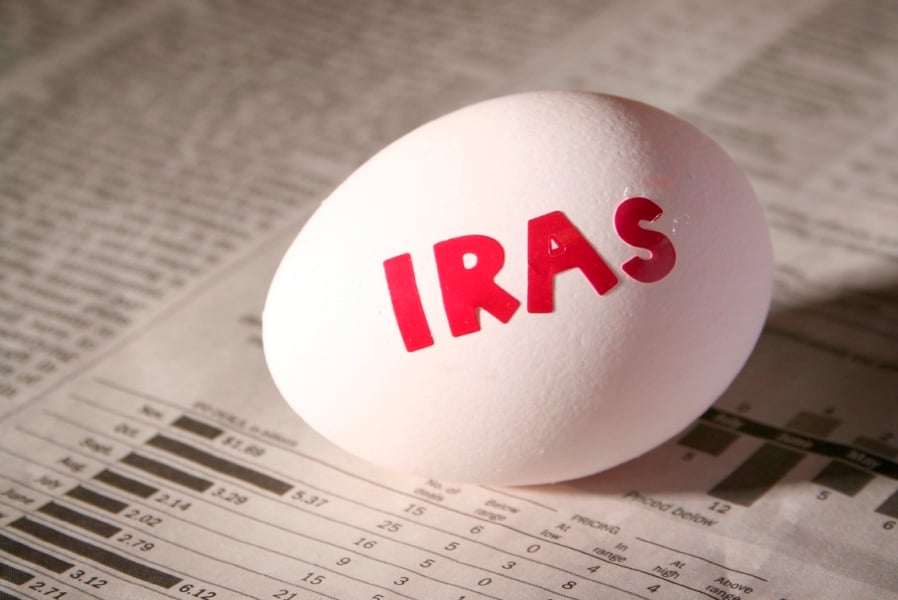

Stocks dropped and investor anxiety rose in the second quarter due to spiraling inflation and spiking interest rates. Nevertheless, individual retirement accounts still saw significant growth in the period, especially among Gen Z workers and millennial women, according to a Fidelity Investments survey.
The Fidelity study of more than 35 million IRAs in the second quarter revealed more than half of American workers are “extremely or very concerned” about the health and stability of the economy. As a result, nearly 1 in 5 (19%) say they have adjusted their retirement strategy and are taking a more conservative approach to their retirement savings.
Of course, one might expect higher levels of concern as a result of the 16.1% decline in the S&P during the quarter. However, retirement savers continued to look long term, as total 401(k) savings rates still hovered at record levels, according to Fidelity. Furthermore, the number of IRAs on Fidelity’s platform continued to increase, and the percentage of employees with 401(k) loans remained low for the fifth consecutive quarter.
“Although many Americans are understandably concerned about the economy, record-high inflation and markets at this time, it’s encouraging to see the prevailing emotion has been to stay calm and focused on one’s retirement objectives,” said Kevin Barry, president of workplace investing at Fidelity Investments. “Saving for retirement is a goal that is decades in the making, and there will naturally be many twists and turns. However, the best action savers can take to help achieve success is to consistently save and invest.”
“Retirement is not a short-term part of life, so why would you let any short-term situation disrupt your long-term planning?” said Todd R. Anderson, managing partner of Anderson Financial Group at Kingswood US.
Fidelity’s analysis for the second quarter also showed that Gen Z 401(k) savers, who tend to be heavily invested in target-date funds, experienced the smallest declines of any age group. The average Gen Z account balance dropped by only 8% from the previous quarter.
As of Q2, 85% of Gen Z savers have all of their 401(k) savings in a target-date fund, the study showed. The use of target-date funds as a default option continues to increase in popularity, with a 93.2% adoption rate by plan sponsors in the second quarter, up from 88.1% in the second quarter of 2017, according to Fidelity.
"While markets are likely to remain turbulent, especially at times of increased uncertainty in the economy, investors have learned to take a longer-term view and to avoid knee-jerk, short-term reactions," said Dillon Christensen, senior vice president at Evoke Advisors.
Furthermore, significant growth occurred in the number of IRAs over the course of Q2, especially among Gen Z and millennials. The total number of Fidelity IRAs reached 12.8 million, a 10.6% increase over Q2 of last year. Fidelity said the number of accounts for Gen Z savers increased by 87% when compared to Q2 2021 and the number of millennial accounts rose by 24%.
Account growth for women — who own 45% of total IRAs — saw a year-over-year increase of 92% for Gen Z and 24% for millennials, the survey showed. These accounts continue to be active, with the number of contributing accounts year to date increasing 4.1% over the second quarter of 2021. In particular, the number of millennial Roth IRA accounts with a contribution was up 7.8% year to date, according to Fidelity.
Meanwhile, the study showed that men continued to save at higher rates than women (14.7% versus 13.7%), while pre-retiree boomers saved at the highest levels (16.6%), although even Gen Z participants saved in the double digits (10%).
Finally, in another dose of positive news, outstanding 401(k) loans and average loan amounts continued to decline. The study showed the percentage of 401(k) savers initiating a new loan remains low, with only 2.4% of participants initiating a loan in Q2. In addition, the portion of participants with a loan outstanding also moved downward, declining to 16.7% for the second quarter — which is a significant drop compared to 18.9% in the second quarter of 2020, at the start of the pandemic.

As other states curb non-competes, the East Coast growth hub could soon become the most employer-friendly jurisdiction in the US.

Last summer, the two, David Gentile and Jeff Schneider, were found guilty of fraud in federal court in Brooklyn and received their sentencing today.

Early parenthood linked to lower fulfillment and fewer leadership roles, despite otherwise strong industry-wide support.

“It's the Golden Age, we're all blessed that this is where we are, what we do for a living, and that the sun is shining on the transition towards the RIA space," Creative Planning CIO Jamie Battmer said at a forum hosted by Goldman Sachs.

Strategists expect municipal bonds to best Treasuries during the four-month window from May until August, following a historical trend.
From direct lending to asset-based finance to commercial real estate debt.
RIAs face rising regulatory pressure in 2025. Forward-looking firms are responding with embedded technology, not more paperwork.
